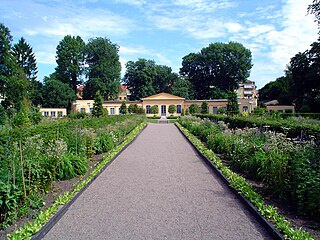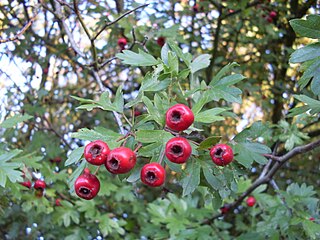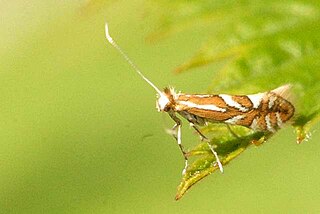
The name Crataegus oxyacantha L. has been rejected as being of uncertain application, but is sometimes still used.

The name Crataegus oxyacantha L. has been rejected as being of uncertain application, but is sometimes still used.
Linnaeus introduced the name Crataegus oxyacantha for a species of Northern European hawthorn [1] and the name gradually became used for several similar species, which were assumed to be the same, particularly the Midland hawthorn C. laevigata and the common hawthorn C. monogyna . In 1946, Dandy showed that Linnaeus had actually observed and described a single-styled species similar to the common hawthorn, [2] and the Midland hawthorn was effectively a later discovery. However, Byatt showed that confusion over the true identity of C. oxyacantha remained, [3] and the name was formally rejected as ambiguous by the International Botanical Congress. [2] [4] : Appendix V, Nomina utique rejicienda More recently, Christensen concluded [5] that the species studied by Linnaeus matches C. rhipidophylla Gand., a relatively rare species.

Crataegus, commonly called hawthorn, quickthorn, thornapple, May-tree, whitethorn, Mayflower or hawberry, is a genus of several hundred species of shrubs and trees in the family Rosaceae, native to temperate regions of the Northern Hemisphere in Europe, Asia, North Africa and North America. The name "hawthorn" was originally applied to the species native to northern Europe, especially the common hawthorn C. monogyna, and the unmodified name is often so used in Britain and Ireland. The name is now also applied to the entire genus and to the related Asian genus Rhaphiolepis.

The International Code of Nomenclature for algae, fungi, and plants is the set of rules and recommendations dealing with the formal botanical names that are given to plants, fungi and a few other groups of organisms, all those "traditionally treated as algae, fungi, or plants". It was formerly called the International Code of Botanical Nomenclature (ICBN); the name was changed at the International Botanical Congress in Melbourne in July 2011 as part of the Melbourne Code which replaced the Vienna Code of 2005.

Crataegus monogyna, known as common hawthorn, one-seed hawthorn, or single-seeded hawthorn, is a species of flowering plant in the rose family Rosaceae. It is native to Europe, northwestern Africa, and Western Asia, but has been introduced in many other parts of the world.

Comptonia peregrina is a species of flowering plant in the family Myricaceae native to eastern North America. It is the only extant (living) species in the genus Comptonia, although a number of extinct species are placed in the genus.

Andromeda polifolia, common name bog-rosemary, is a species of flowering plant in the heath family Ericaceae, native to northern parts of the Northern Hemisphere. It is the only member of the genus Andromeda, and is only found in bogs in cold peat-accumulating areas. Andromeda glaucophylla is a synonym of A. polifolia var. latifolia.
Nomenclature codes or codes of nomenclature are the various rulebooks that govern the naming of living organisms. Standardizing the scientific names of biological organisms allows researchers to discuss findings.

Crataegus laevigata, known as the Midland hawthorn, English hawthorn, woodland hawthorn, or mayflower, is a species of hawthorn native to western and central Europe, from Great Britain and Spain, east to Romania and Ukraine. The species name is sometimes spelt C. levigata, but the original orthography is C. lævigata.

Crataegus azarolus is a species of hawthorn known by the common names azarole, azerole and Mediterranean medlar. It is native to the Mediterranean Basin and is a common plant there, growing on sites comparable to those the European common hawthorn grows on. In the Arab countries it is the most common hawthorn species. When growing in the wild, the azerole bears plentiful crops of haw fruits, which are similar to the haws of the European common hawthorn, but more plump.
Crataegus brachyacantha is one of the "black-fruited" species of hawthorn, but it is only very distantly related to the other black-fruited species such as C. douglasii or C. nigra. The common names blueberry haw and blueberry hawthorn refer to the appearance of the fruit, which are almost blue, and does not refer to their taste. The species is rarely cultivated but has ornamental leaves, flowers, and foliage. It is native to Louisiana, and also occurs just across the border of neighbouring states.

Crataegus chrysocarpa is a species of hawthorn that is native to much of the continental United States and Canada. Common names fireberry hawthorn and goldenberry hawthorn, as well as the scientific name all refer to the colour of the unripe fruit, although the mature fruit is red and in var. vernonensis is "deep claret-colored … nearly black when over-ripe".

Crataegus crus-galli is a species of hawthorn known by the common names cockspur hawthorn and cockspur thorn. It is native to eastern North America from Ontario to Texas to Florida, and it is widely used in horticulture. It is thought to be the parent, along with Crataegus succulenta, of the tetraploid species Crataegus persimilis.

Crataegus orientalis, known as oriental hawthorn, is a species of hawthorn native to the Mediterranean region, Turkey, Caucasia, Crimea, and western Iran, with fruits that are orange or various shades of red.

Crataegus rhipidophylla is a species of hawthorn which occurs naturally from southern Scandinavia and the Baltic region to France, the Balkan Peninsula, Turkey, Caucasia, and Ukraine. It is poorly known as a landscape and garden plant, but seems to have potential for those uses.

Crataegus mexicana is a species of hawthorn known by the common names tejocote, manzanita, tejocotera and Mexican hawthorn. It is native to the mountains of Mexico and parts of Guatemala, and has been introduced in the Andes. The fruit of this species is one of the most useful among hawthorns.

Nomen illegitimum is a technical term used mainly in botany. It is usually abbreviated as nom. illeg. Although the International Code of Nomenclature for algae, fungi, and plants uses Latin terms as qualifiers for taxon names, the definition of each term is in English rather than Latin. The Latin abbreviations are widely used by botanists and mycologists.

Crataegus coccinea, the scarlet hawthorn, is a species of hawthorn around which there is considerable confusion because the name has been misapplied for a long time. It has been shown to be the same as C. pedicellata, and under the rules of botanical nomenclature, the older name should be used.
Crataegus × macrocarpa, is a hybrid between two species of Crataegus (hawthorn), C. laevigata and C. rhipidophylla, both in series Crataegus. A chemotaxonomic investigation comparing flavonoid patterns in C. × macrocarpa and its putative parent species corroborated their supposed relationship. It is sometimes confused with C. × media, the hybrid between C. monogyna and C. laevigata.

Phyllonorycter oxyacanthae is a moth of the family Gracillariidae found in all of Europe except the Balkan Peninsula. It was described by the German-born Swiss entomologist, Heinrich Frey in 1856. The larvae are known as leaf miners, living inside the leaves of their food plants.

Crataegus songarica is an Asian species of hawthorn with black fruit that is sometimes used medicinally. It is closely related to Crataegus ambigua, a species that has red fruit.
Crataegus × yosgatica or Crataegus yosgatica is a putative hybrid species of hawthorn. It was thought to be a cross between Crataegus monogyna and C. tanacetifolia. A 2014 molecular and morphological study reduced it to a synonym of Crataegus meyeri.